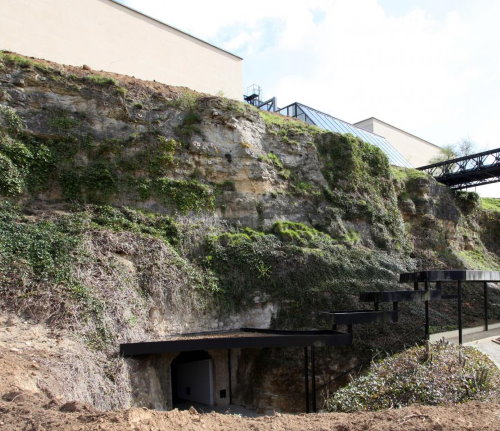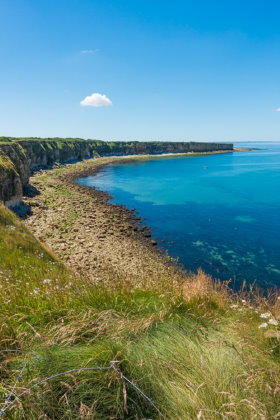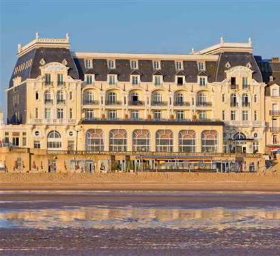Caen Memorial in Normandy
The Caen Memorial is a museum and war memorial in Caen near D-Day landing beaches in France, commemorating World War II and the Battle for Caen. More generally, the museum is dedicated to the history of the twentieth century, mainly focused on the fragility of peace. Its intention is "pay a tribute to the martyred city of the liberation". Normandy bus tours.
Caen Memorial facts
The idea of a memorial for peace came from the mayor of Caen, Jean-Marie Girault, in 1969. On September 10, 1986, the first 13 stones of the building were laid at the site of the command post of General Richter, commander the 716th German Infantry Division during D-Day and the Battle of Normandy. The building was inaugurated on June 6, 1988 by the French President François Mitterrand in the presence of the heads of state or government of eleven other countries involved in the Battle of Normandy. This "Museum for Peace", originally designed by architect Jacques Millet, brings together a collection of more than 8,000 objects and more than 100,000 documents dealing mainly with the Second World War, mostly in Europe. The permanent exhibition is chronological and thematic. It offers a central place to the holocaust. Since 2008, the Caen Memorial has become the place of deposit of the objects of excavation of the "Shoah by bullets" found by the Yahad In Unum Foundation.
Caen 14050 France

The entrance of Caen Memorial
Caen Memorial bunker
The entrance to the museum is bordered on one side by the flagpoles of the main countries involved in the Battle of Normandy, and on the other side by a window displaying the twelve "first stones" of the building, extracted from their soil by each of the twelve nations concerned, and adorned with a lapidary inscription in each of their languages. In an underground Memorial, the former command post of German General Wilhelm Richter played a leading role during the first few weeks of the Battle of Normandy. This strategic historical site has been completely redesigned to deliver its history and offer visitors new keys to understanding the German occupation and resistance.

The bunker of Caen Memorial
Caen Memorial tours from Paris
The Caen Memorial Museum tells the story of the Second World War, in particular the Battle of Normandy and the advance of the Allied forces across France. You see there everyday objects from life under occupation as well as films that recreate the emotions of the Battle of Normandy. An emotional tour from Paris to Normandy make you relive the most important hours of D-Day landing and the battle of Normandy in June 1944. On June 6, 1944, known as D-Day, the Allies opened a new European front against the troops of the Third Reich during the Second World War. It was the largest military operation in history. More than 150,000 soldiers from America, Britain, Canada, France and other nations landed mostly by sea on beaches along the Normandy coastline, which they called Utah Beach, Omaha Beach, Juno Beach, and at the steep cliffs of Pointe du Hoc.
You will see Pointe du Hoc, the American Cemetery of Saint Laurent, Omaha Beach, Arromanches and the Caen Memorial (see D-Day map).
One day tour. 185 euros. Minivan. Book tour

D-Day beaches are now very peaceful
Cabourg Normandy Beach resort hotel
The prestigious 5-star Grand Hotel in Cabourg, where writer Marcel Proust once lived, is located directly on the seafront in Cabourg. It offers stylish guestrooms, some with views of the sea, a gourmet restaurant, a bar and access to a private beach. A Grand Buffet with music is served each morning at Le Grand Hotel Cabourg. The restaurant offers a panoramic view of the sea and serves gourmet regional dishes.
Cabourg 14390 France

The Grand Hotel in Cabourg is on the beach
